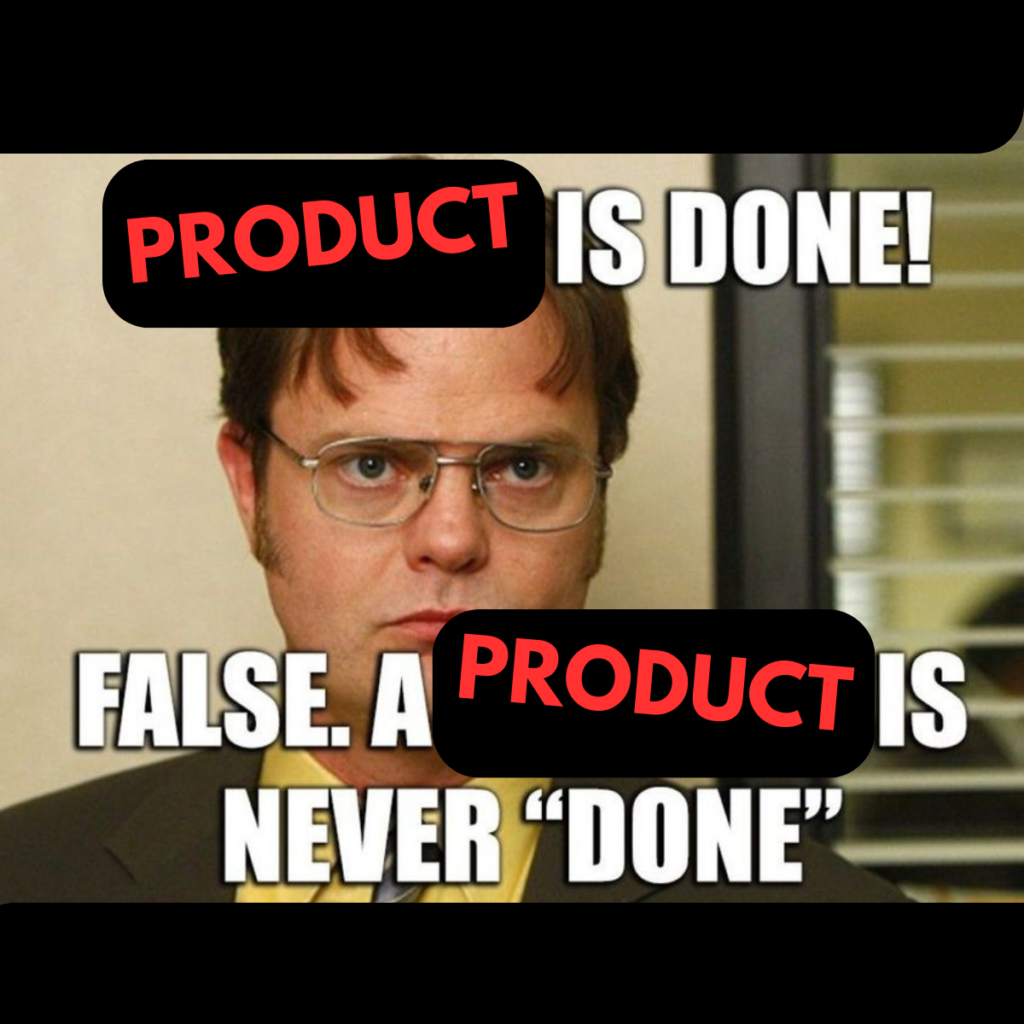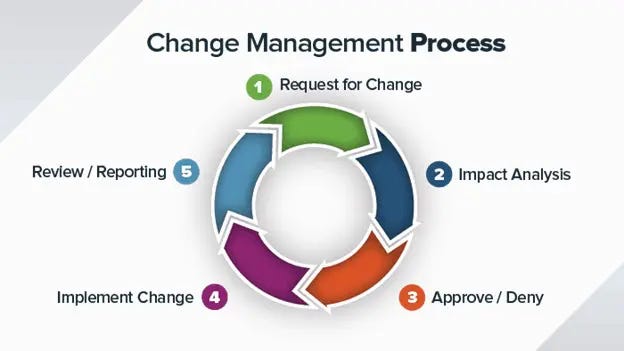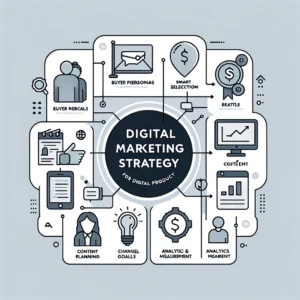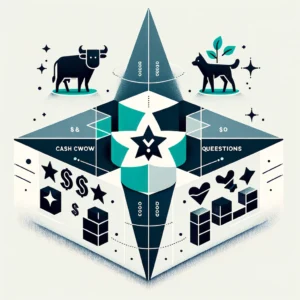
In the dynamic world of product development, there’s a notion that often catches newcomers by surprise: your product is never truly “done.” It might seem counterintuitive, but let’s unravel why this is a fundamental truth in the journey of creating successful products.
Here are 10 reasons why your Product is Never Really Done
1. Evolving User Needs: Users are a Moving Target
The ever-evolving nature of user needs is a central tenet of product development. Think of it as a perpetual quest to meet and exceed your users’ expectations, but the finish line keeps shifting. Here’s why this phenomenon is so critical, along with some illustrative examples:
More insights: https://www.arturadamczyk.site/articles/
Technology Advancements:
As technology marches forward, users become accustomed to higher standards. Consider the evolution of smartphones. What was once a delightfully small screen is now considered standard, and users demand more powerful processors, better cameras, and innovative features.
Changing Preferences:
User preferences shift with time. Take the music industry as an example. Vinyl records gave way to cassette tapes, which were replaced by CDs, and now digital streaming reigns supreme. Users’ preferred formats continually evolve.
Shifting Expectations:
User expectations grow in tandem with technological advancements. In the realm of e-commerce, users now expect lightning-fast shipping, seamless returns, and personalized recommendations, which weren’t as prevalent or expected a decade ago.
Example: Streaming Services
Consider the evolution of streaming services like Netflix. Initially, offering a library of movies and TV shows online was groundbreaking. However, as user expectations changed, so did Netflix. They ventured into producing original content to differentiate themselves, responding to the evolving preference for exclusive and diverse content.
Example: Mobile Apps
Mobile app development epitomizes the need for continuous adaptation. Apps that once captivated users can quickly become outdated. For instance, the first generation of ride-sharing apps met the basic need for convenient transportation. However, as users became more discerning, they began to demand features like real-time tracking, shared rides, and contactless payments, which necessitated constant updates.
In summary, understanding that user needs are dynamic and staying attuned to these changes is a fundamental principle of product development. By keeping your finger on the pulse of evolving technology, preferences, and expectations, you can ensure that your product remains not only relevant but also a preferred choice among users. It’s a journey of perpetual adaptation and innovation, and those who embrace it thrive in the ever-changing landscape of technology and user demands.
2. Technological Advancements: Navigating the Shifting Tech Landscape
In today’s fast-paced tech-driven world, keeping up with technological advancements is akin to riding a roller coaster that never stops. Here’s a deeper dive into why staying ahead of the curve is vital, along with some tangible examples that highlight the importance of embracing these changes:
The Accelerated Tech Evolution:
The rate at which technology evolves is astonishing. New tools, platforms, and capabilities emerge at a breakneck speed. From the introduction of 5G networks to the rise of blockchain and artificial intelligence, the tech landscape is in a perpetual state of flux.
Competitive Edge:
To maintain a competitive edge, your product must not only adapt to these changes but also leverage them. Consider the smartphone industry. Apple’s iPhone, for instance, introduced a fingerprint scanner and facial recognition technology, setting the standard for competitors and driving innovation across the mobile industry.
Scalability and Performance:
Technological advancements often lead to improvements in scalability and performance. Cloud computing services like AWS, Azure, and Google Cloud have transformed how companies manage their data and infrastructure. Businesses that adopted these innovations early gained a significant advantage in terms of scalability, cost-efficiency, and global reach.
User Experience Enhancement:
Technological advancements enable you to enhance the user experience. Think about web development, where the shift from static HTML websites to dynamic, interactive web applications has revolutionized how users engage with digital content.
Example: E-commerce and AI
In the e-commerce space, artificial intelligence has been a game-changer. Algorithms that analyze user behavior can provide personalized product recommendations, increasing sales and customer satisfaction. Companies like Amazon have harnessed AI to optimize their supply chains, ensuring faster deliveries and lower costs.
Example: Streaming Services and 5G
Streaming services are embracing the capabilities of 5G networks. With reduced latency and faster download speeds, users can stream high-definition content seamlessly. Platforms like Netflix are leveraging this technology to provide an enhanced streaming experience, ensuring their product remains competitive in an increasingly crowded market.
3. Competitive Pressure: Thriving in the Innovation Race
Competition in the business world is akin to a never-ending marathon, where the finish line keeps shifting further away. Here’s why the relentless drive to outdo your competitors is a fundamental aspect of product development, complemented by illustrative examples that underscore its significance:
Innovation as a Survival Strategy:
The business landscape is dynamic, and innovation is often the lifeblood of staying relevant. Take the smartphone market, for instance. Companies like Apple, Samsung, and Google continually introduce new features, better cameras, and enhanced user experiences to outpace their rivals.
Meeting Customer Expectations:
In today’s world, customer expectations are sky-high. Customers expect products to continually evolve, offering more value and better experiences. E-commerce platforms, for example, are in a constant battle to improve their user interfaces, recommendations, and fulfillment processes to meet or exceed customer expectations.
Market Saturation:
As markets mature, competition intensifies. For example, consider the ride-sharing industry. When Uber entered the market, it disrupted the traditional taxi industry. However, as the market became saturated, competitors like Lyft emerged, compelling both companies to innovate continuously to attract and retain customers.
Global Expansion:
Expanding into new markets often requires tailoring your product to local preferences and regulations. Companies like Airbnb, which operate worldwide, need to adapt their offerings and user experiences to suit diverse cultures and legal environments.
Example: Social Media Platforms
Social media platforms like Facebook, Instagram, and Twitter are in a constant battle to capture and retain users’ attention. To stay ahead, they continually introduce new features such as Stories, Live video, and improved algorithms for content discovery. This ongoing innovation not only attracts users but also keeps them engaged.
Example: Food Delivery Services
Food delivery services like DoorDash and Grubhub face intense competition. To differentiate themselves, they constantly expand their restaurant partnerships, improve delivery times, and enhance user interfaces. The competition has led to a broader selection of cuisines and better service for customers.
Bug Squashing: The Never-Ending Pursuit of Perfection
In the world of software development, the quest for perfection is a journey filled with unexpected bumps and hurdles. Let’s delve deeper into why bug squashing is an ongoing endeavor that lies at the heart of delivering a seamless user experience, accompanied by some real-world examples that highlight its paramount importance:
Inevitability of Bugs:
First and foremost, it’s essential to accept that no software is immune to bugs. As products become more complex and users employ them in various ways, unforeseen issues are bound to arise. Even the most rigorous testing can’t catch every potential problem.
User-Discovered Bugs:
Users, as the most active participants in your product’s lifecycle, are often the ones who unearth these bugs. Their diverse actions and scenarios reveal vulnerabilities that your testing may not have covered. For instance, consider a social media platform where users might encounter issues with posting content, sharing links, or accessing specific features.
Seamless User Experience:
Your product’s reputation and user satisfaction are at stake when bugs persist. Users expect a seamless experience, and when they encounter issues, it can erode trust and drive them away. Regular bug fixes through updates are crucial to maintaining a high-quality user experience.
Continuous Improvement:
Software development doesn’t stop at the initial release. It’s an iterative process that involves continuous improvement. Bug fixing isn’t merely about addressing problems but also about enhancing the product’s overall stability, reliability, and performance.
Example: Operating Systems
Operating systems like Windows and macOS regularly release updates to address bugs and security vulnerabilities. These updates not only improve system stability but also ensure that users can perform their tasks without interruptions. Failure to address critical bugs can lead to system crashes, data loss, and compromised security.
Example: Mobile Apps
Mobile app developers frequently release updates to address bugs and enhance features. Users may encounter issues related to app crashes, freezing, or unexpected behavior. Prompt bug fixes not only resolve these issues but also demonstrate a commitment to user satisfaction.
Bug Squashing: The Never-Ending Pursuit of Perfection
In the world of software development, the quest for perfection is a journey filled with unexpected bumps and hurdles. Let’s delve deeper into why bug squashing is an ongoing endeavor that lies at the heart of delivering a seamless user experience, accompanied by some real-world examples that highlight its paramount importance:
Inevitability of Bugs:
First and foremost, it’s essential to accept that no software is immune to bugs. As products become more complex and users employ them in various ways, unforeseen issues are bound to arise. Even the most rigorous testing can’t catch every potential problem.
User-Discovered Bugs:
Users, as the most active participants in your product’s lifecycle, are often the ones who unearth these bugs. Their diverse actions and scenarios reveal vulnerabilities that your testing may not have covered. For instance, consider a social media platform where users might encounter issues with posting content, sharing links, or accessing specific features.
Seamless User Experience:
Your product’s reputation and user satisfaction are at stake when bugs persist. Users expect a seamless experience, and when they encounter issues, it can erode trust and drive them away. Regular bug fixes through updates are crucial to maintaining a high-quality user experience.
Continuous Improvement:
Software development doesn’t stop at the initial release. It’s an iterative process that involves continuous improvement. Bug fixing isn’t merely about addressing problems but also about enhancing the product’s overall stability, reliability, and performance.
Example: Operating Systems
Operating systems like Windows and macOS regularly release updates to address bugs and security vulnerabilities. These updates not only improve system stability but also ensure that users can perform their tasks without interruptions. Failure to address critical bugs can lead to system crashes, data loss, and compromised security.
Example: Mobile Apps
Mobile app developers frequently release updates to address bugs and enhance features. Users may encounter issues related to app crashes, freezing, or unexpected behavior. Prompt bug fixes not only resolve these issues but also demonstrate a commitment to user satisfaction.
5. Feedback-Driven Enhancements: Turning User Insights into Product Gold
User feedback is the secret sauce that can transform a good product into a great one. It’s not just a nice-to-have; it’s a strategic asset. Let’s explore why embracing user feedback is essential and back it up with some illuminating examples from the world of product development:
Valuable User Insights:
Users are your frontline experts. They interact with your product in real-world scenarios, uncovering nuances and offering insights that can’t be gleaned from internal perspectives alone. User feedback serves as a window into their experiences, revealing pain points, desires, and areas for improvement.
Customer-Centric Approach:
Prioritizing user feedback showcases a customer-centric approach. It’s an acknowledgment that your product exists to serve your users’ needs and preferences. Failing to consider their input can result in a misalignment between your product and its intended audience.
Enhancing User Satisfaction:
Addressing user feedback can lead to enhanced user satisfaction. When users see their suggestions being implemented and their issues resolved, it fosters a sense of engagement and loyalty. This, in turn, can lead to increased retention and positive word-of-mouth recommendations.
Iterative Development:
User feedback fuels an iterative development cycle. By continuously incorporating user insights, your product evolves in a direction that aligns with user expectations and requirements. This agility is crucial in a rapidly changing market.
Example: Social Media Platforms
Social media giants like Facebook actively encourage user feedback through their platforms. Users can report content, suggest new features, or provide feedback on their experiences. This feedback loop has led to various improvements, from enhanced content moderation to the introduction of features like reactions and live streaming.
Example: Software Applications
Software applications often have feedback mechanisms built into their interfaces. Microsoft Office, for instance, allows users to provide feedback on specific features or report issues. This feedback informs the development team about which features are essential to users and where improvements are needed.
6. Regulatory Changes: Navigating the Shifting Seas of Compliance
In the ever-evolving landscape of business and industry, regulatory changes are akin to tidal shifts, often unpredictable yet impactful. Understanding why staying abreast of these changes is imperative, along with some real-world examples, underscores the critical role of compliance in product development:
Industry-Specific Regulations:
Regulatory bodies, whether in healthcare, finance, or technology, regularly update rules and guidelines to ensure safety, security, and ethical standards. Ignoring or failing to adapt to these changes can result in costly legal consequences.
Mitigating Legal Complications:
The consequences of non-compliance can range from fines and lawsuits to reputational damage. Staying up to date with regulatory changes is not merely a proactive measure but a way to mitigate potential legal complications down the road.
Product Integrity and Safety:
In industries like pharmaceuticals, medical devices, and food production, regulatory changes often focus on product integrity and safety. Failure to comply with these changes can jeopardize the well-being of consumers and result in recalls or even criminal charges.
Example: GDPR in Data Privacy
The General Data Protection Regulation (GDPR) in Europe is a prime example of regulatory changes that had a global impact. Companies that handle personal data needed to make significant changes to their data management practices to comply with GDPR. Those who failed to do so faced hefty fines.
Example: FDA Regulations in Healthcare
In the healthcare industry, the U.S. Food and Drug Administration (FDA) continuously updates regulations to ensure the safety and efficacy of medical devices and pharmaceuticals. Companies must remain vigilant and adapt their products to align with these evolving standards.
Example: Environmental Regulations in Automotive
In the automotive industry, environmental regulations have driven significant changes in vehicle design and emissions control. Manufacturers that did not anticipate and adapt to these regulatory shifts faced challenges in selling their products in markets with stringent emission standards.
7. Scaling Challenges: Adapting to Success and Sustaining Growth
Scaling challenges represent a paradox of success in the world of product development. The more successful your product becomes, the more you need to invest in scaling your infrastructure. This ongoing need for adjustment is a testament to your product’s popularity and user demand. Let’s delve deeper into why scaling challenges are perpetual and explore real-world examples that shed light on their significance:
User Growth:
Success often translates to a growing user base. While this is undoubtedly a positive sign, it also means that your infrastructure must handle a larger volume of users, requests, and data. This requires constant monitoring, planning, and adjustments to keep the user experience smooth.
Maintaining Performance:
Users expect consistent performance, whether your product serves dozens or millions of users. Scaling challenges arise when you need to ensure that response times, load times, and overall performance remain optimal as your user base expands.
Resource Allocation:
Scaling often requires resource allocation, including servers, bandwidth, and storage. It involves decisions about whether to use cloud services, expand data centers, or optimize code for efficiency. These decisions must be revisited as your product evolves.
Example: Amazon Web Services (AWS)
AWS, one of the world’s largest cloud providers, continually faces scaling challenges due to the vast number of customers it serves. To maintain its position and provide reliable services, AWS invests heavily in infrastructure expansion, data center construction, and network enhancements. This ensures that it can accommodate the demands of its growing customer base.
Example: Social Media Platforms
Social media platforms like Twitter and Instagram experience scaling challenges regularly. As their user bases expand, they must optimize their databases, implement content delivery networks (CDNs), and enhance server capacity to handle the increased traffic and data storage requirements.
Example: E-commerce Sites
E-commerce sites such as Amazon and Alibaba must scale their infrastructure during peak shopping seasons like Black Friday and Cyber Monday. This involves temporarily increasing server capacity, optimizing supply chain operations, and ensuring that payment processing systems can handle the surge in transactions.
8. Quality Assurance: The Unending Pursuit of Perfection
In the ever-evolving landscape of technology, quality assurance isn’t a one-time task—it’s a perpetual commitment to excellence. Let’s explore why maintaining rigorous testing and quality assurance efforts is essential, accompanied by real-world examples that underscore its significance:
Rapid Technological Advancements:
Technology evolves at a breakneck pace. New devices, operating systems, browsers, and platforms continually emerge. Ensuring your product works flawlessly across this dynamic spectrum requires ongoing testing and adaptation.
Diverse User Scenarios:
Users engage with your product in diverse ways and scenarios. Some may access it on the latest smartphones, while others use older devices or different browsers. Comprehensive testing ensures that your product provides a consistent and enjoyable experience for all users.
Bug Discovery:
No software is immune to bugs. As users interact with your product, they may uncover issues that testing hadn’t anticipated. Regular quality assurance efforts are essential for identifying, addressing, and preventing these bugs from impacting the user experience.
Security Concerns:
Cybersecurity threats are continually evolving. Regular testing helps identify vulnerabilities and ensures that your product remains secure. Failure to address security concerns promptly can lead to data breaches and reputational damage.
Example: Web Browsers
Web browsers like Google Chrome, Mozilla Firefox, and Microsoft Edge regularly release updates. Websites and web applications need to undergo compatibility testing to ensure they function correctly on these browsers’ latest versions. This ongoing effort is vital for delivering a seamless browsing experience.
Example: Mobile App Updates
Mobile apps, such as those for iOS and Android, must adapt to new operating system versions. Developers must conduct compatibility testing and address any issues that arise with each OS update to maintain the app’s functionality and user satisfaction.
Example: Video Game Patching
In the gaming industry, video game developers frequently release patches and updates to address bugs, improve gameplay, and add new features. Quality assurance teams play a crucial role in testing these updates to ensure they enhance the gaming experience without introducing new issues.
9. Iterative Improvement: Nurturing Growth through Continuous Refinement
Iterative improvement is the heartbeat of successful product development. It’s a relentless pursuit of perfection through a series of small, strategic steps. Here’s why this approach is vital, along with real-world examples that exemplify its power:
User-Centric Evolution:
Products that prioritize user feedback and iterate accordingly tend to align better with user needs and expectations. Continuous refinement means your product is a direct response to real-world usage and customer insights.
Mitigating Risk:
By releasing minimum viable products (MVPs) early in development, you reduce the risk of investing significant resources in a product that might miss the mark. This approach allows you to gather valuable feedback, pivot if necessary, and optimize your product incrementally.
Adaptation to Change:
The business landscape is fluid, and user preferences shift. Iterative improvement ensures that your product can adapt swiftly to changing circumstances. Whether it’s incorporating emerging technologies or responding to market trends, your product remains relevant.
Example: Facebook’s News Feed
Facebook’s News Feed has undergone numerous iterations since its inception. The social media giant continuously collects user feedback and employs A/B testing to refine the content algorithm. This iterative approach has kept the News Feed engaging and relevant to users.
Example: Agile Software Development
Agile methodologies, such as Scrum and Kanban, epitomize iterative improvement in software development. Agile teams work in short, time-boxed cycles (sprints) to deliver incremental improvements. Each sprint incorporates user feedback to inform the next cycle of development.
Example: Tesla’s Electric Vehicles
Tesla regularly releases over-the-air software updates to its electric vehicles. These updates introduce new features, enhance existing ones, and improve vehicle performance based on real-world data and user feedback. This iterative approach ensures that Tesla owners consistently enjoy improved functionality.
10. Market Dynamics: Navigating the Shifting Tides of Business
Market dynamics are akin to the ever-changing currents of the business world. These external forces—ranging from economic fluctuations to global events—have a profound impact on your product’s journey. Here’s why staying attuned to these dynamics is paramount, illustrated by real-world examples that highlight their significance:
Economic Fluctuations:
Economic cycles are a fundamental aspect of the market. Periods of growth are often followed by downturns, and vice versa. Understanding these cycles and their impact on consumer spending habits is essential for product planning and financial stability.
Example: The 2008 Financial Crisis
The 2008 financial crisis had a profound impact on various industries, including real estate and finance. Companies that had diversified their product offerings and prepared for economic downturns fared better during the crisis, demonstrating the importance of anticipating economic shifts.
Global Events:
Events with worldwide repercussions, such as the COVID-19 pandemic, can disrupt industries and consumer behavior. Adapting to these events by pivoting product offerings or adjusting business models is crucial for survival.
Example: The Pandemic’s Effect on Remote Work Technology
The COVID-19 pandemic accelerated the adoption of remote work technologies. Companies providing video conferencing, collaboration tools, and remote security solutions experienced unprecedented growth. Their ability to swiftly adapt to the market’s changing dynamics was a key factor in their success.
Cultural Shifts:
Changes in societal values, preferences, and norms can impact product demand. Products that align with emerging cultural trends and address evolving consumer concerns often gain a competitive edge.
Example: Sustainable and Eco-Friendly Products
As environmental sustainability became a growing cultural concern, products offering eco-friendly alternatives gained popularity. Companies that recognized this cultural shift and incorporated sustainable practices into their products found themselves well-positioned in the market.
Regulatory Changes:
Government policies and regulations can profoundly affect industries like healthcare, finance, and technology. Staying informed about regulatory changes and adapting to them is essential for compliance and competitive advantage.
Example: GDPR Impact on Data Privacy
The General Data Protection Regulation (GDPR) in Europe imposed stringent data privacy requirements on businesses. Companies that proactively addressed GDPR compliance not only avoided legal complications but also gained trust with privacy-conscious consumers.
Each of these facets contributes to the perpetual nature of product development. They reinforce the idea that a product’s journey is an unceasing voyage, requiring vigilance, adaptability, and a commitment to excellence. It’s not about reaching a final destination but about the continuous pursuit of delivering value, meeting user needs, and staying ahead of the curve.
In this ever-evolving landscape, the most successful products are those that recognize the unending nature of their journey and embrace it. They understand that the pursuit of improvement, innovation, and relevance is the true essence of product development. It’s a journey marked by challenges, opportunities, and an unwavering dedication to delivering the best possible experience to users. So, fasten your seatbelts, fellow product developers, for the journey is bound to be as rewarding as it is perpetual. 🚀🌟🛠️




